What can you see at the beach? Sunsets, crashing waves, shells, sea turtles, and fleas. Wait, fleas? Yes, sand fleas are a thing, and most of us have spotted them hopping around the shoreline. They’re fast, but what do sand fleas look like up close, and how can we identify them? This article primarily concentrates on the North American sand fleas (also known as “sand hoppers”), but we’ll also look a little at tropical chigoe sand fleas.
Let’s dive into the wonderful world of jumping sand fleas.
What Does a Sand Flea Look Like?
Generally, a sand flea is a quarter-of-an-inch to an inch long and tan, gray, green, or brown to blend into its sandy surroundings. Experts think sand fleas utilize camouflage and can actually change color to blend into their environment. Over 90 species live in the United States, and they are widespread along the coasts. Females grow larger than males, but it’s difficult to tell because we tend to spot sand fleas mid-jump when their motion catches our eye.
Sand fleas boast five pairs of long legs, long, thick, reddish antennae, one of which is longer than the other, and tiny black eyes nestled on top of their heads. They use gills to breathe oxygenated water and develop hard exoskeletons, as is common with crustaceans, to protect against predators and the rough coastal environment.
The common name beach hopper or sand hopper describes their environment and their quick as a flash jumping motion. In order to jump, a sand hopper tucks its tail beneath its body and then flicks it out, rapidly pinging itself into the air.
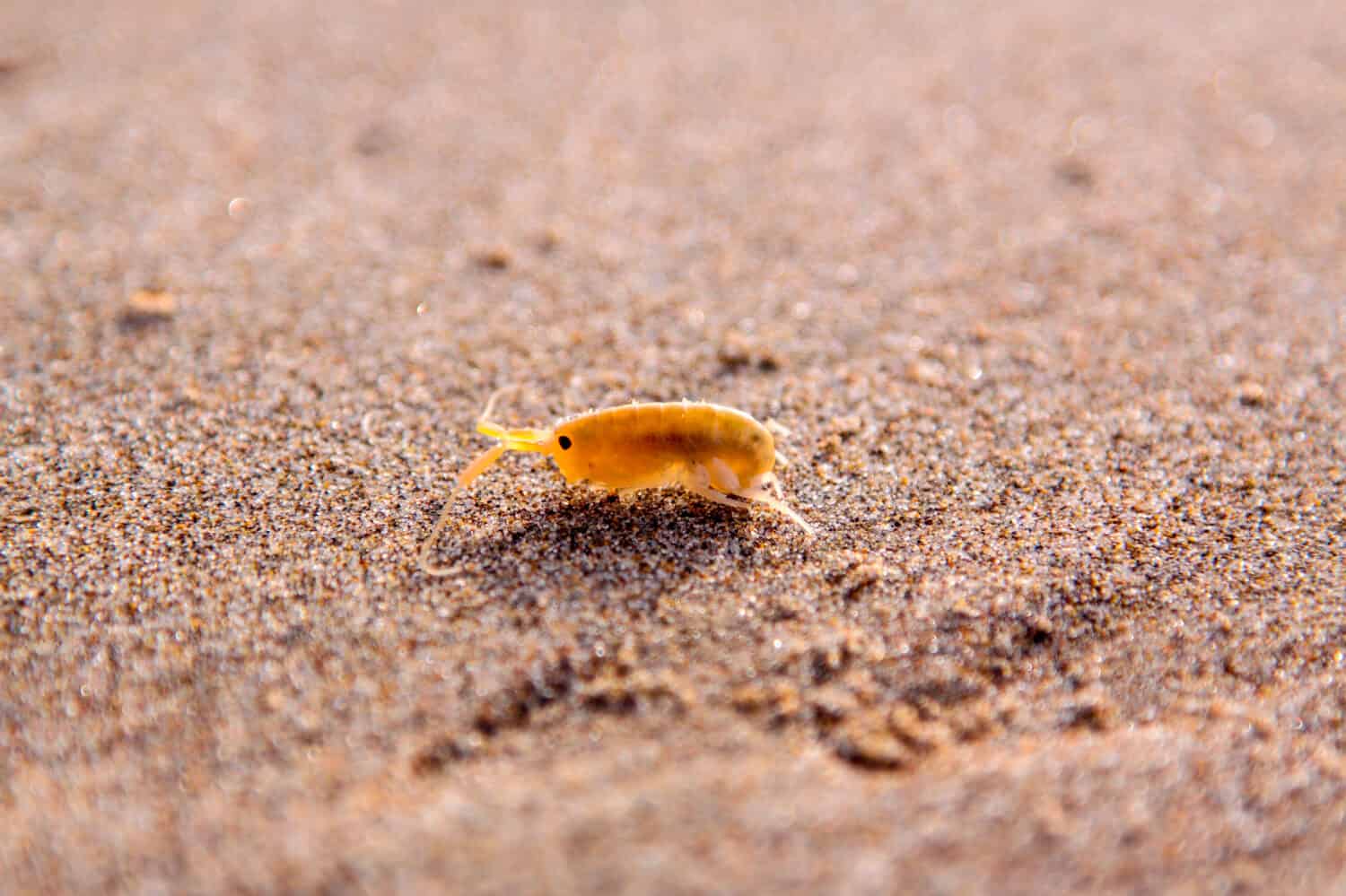
In the United States, sand fleas are usually called sand hoppers.
©Bandersnatch/Shutterstock.com
Do Sand Fleas Look Like Pet Fleas?
No, sand fleas are not fleas or even insects. Sand fleas are tiny crustaceans in the Amphipod order. Although sand fleas jump like the dog or cat fleas we’re more familiar with, they’re not the same thing.
Brown fleas that live on mammals and birds sit in the Siphonaptera order of 2,500 external parasite insects. They ingest host blood to survive and grow to around three millimeters. These fleas do bite people (although they prefer the safety of feathers and fur to hide in).
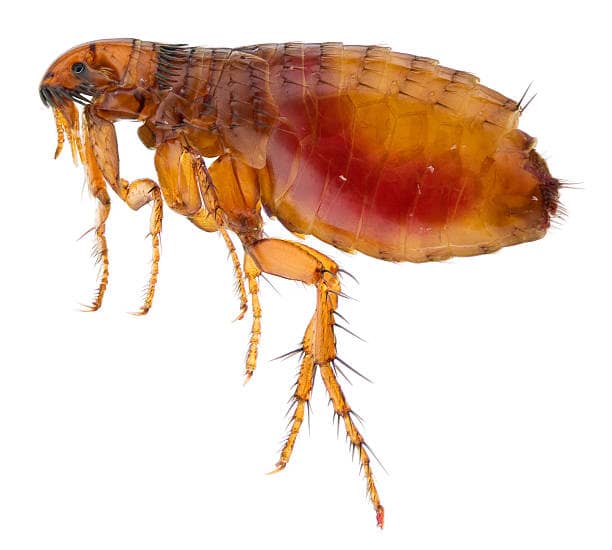
Sand fleas are not the same thing as cat or dog fleas.
©iStock.com/coopder1
Are Sand Fleas Harmful to Humans?
Sand fleas are not harmful to humans. Since they jump like fleas, it’s easy to associate them with the itchy, stinging bites of cat fleas. At the beach, stings and bites are much more likely to come from gnats, midges, or blood-feeding sandflies that leave welts and red itchy bumps.
However, in tropical Central to South America, parts of Africa and Asia, and the Caribbean, a creature called chigoe flea (Tundra penetrans), sometimes called the jigger flea, does bite humans, and females bore into human feet. These minute parasitic fleas may be the reason many folks think harmless sand fleas on North American beaches are dangerous. Chigoe bites can develop into sand flea disease tungiasis that leads to lesions and severe inflammation.
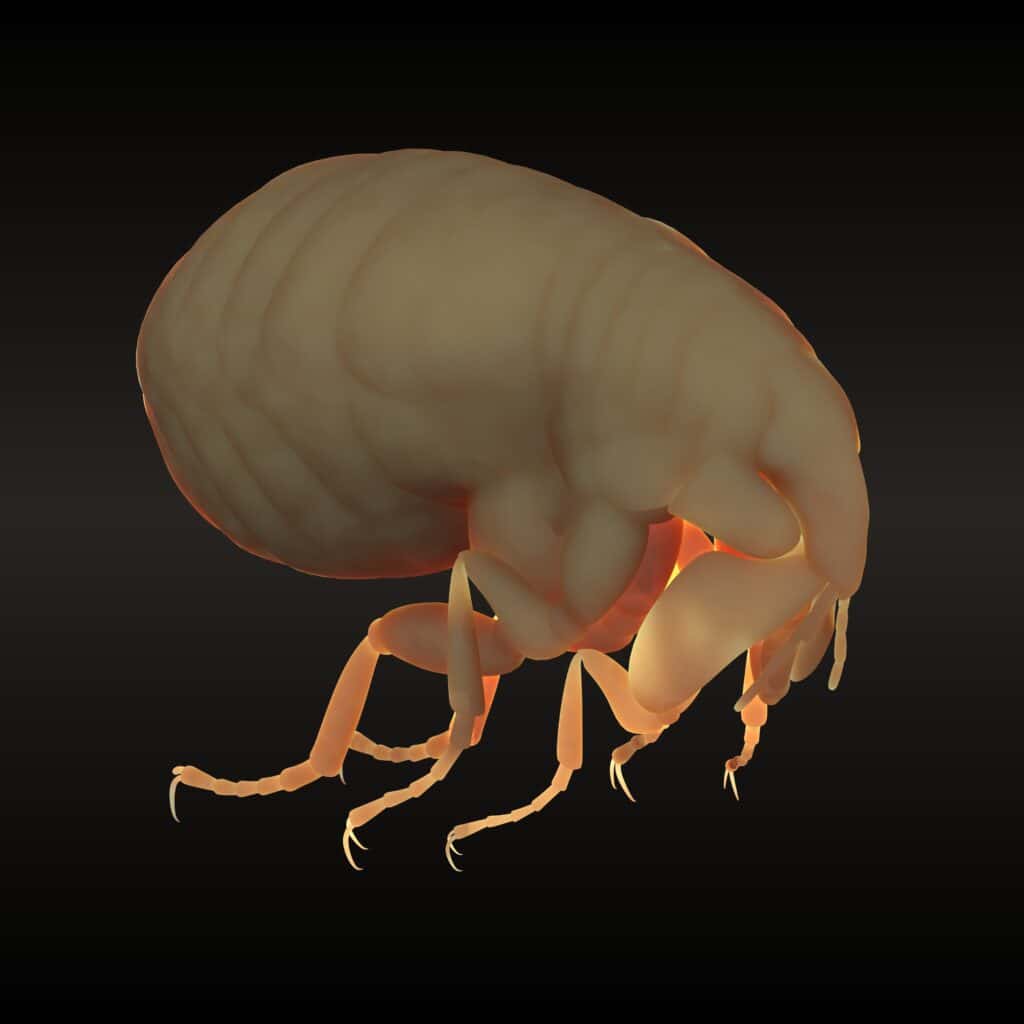
Chigoe sand fleas, called jiggers, live in tropical Central to South America, Asia,
Africa
, and the Caribbean.
©3drenderings/Shutterstock.com
What About Dogs?
No, North American sand fleas don’t live on, or harm dogs, but tropical chigoe sand fleas do feed from and lay eggs in mammals.
Do Sand Fleas Leave the Beach?
Sand fleas live on sandy beaches, usually under rocks or vegetation, on the high tide line. They generally hide, buried up to 12 inches in the sand, then emerge at night to forage their food. If you lift seaweed, you might spot them jumping flea-like back to the sand. Sand fleas can swim back to shore with the help of their tail flips if a rogue wave washes them out.
One or two might get stuck in your towels or belongings, but they don’t hitch a lift on purpose. A sand flea will dry out and die in your home. Their damp bodies have to stay moist at all times.
Common North American sand flea species live along the Atlantic coastline, while some live on the Pacific or Gulf coast. Inland coastal marshes are popular habitats, too. Although most sand fleas live near water, a few terrestrial species live in moist habitats.
During winter, most adult species live in a dormant state in the damp sand above the spring tide mark.
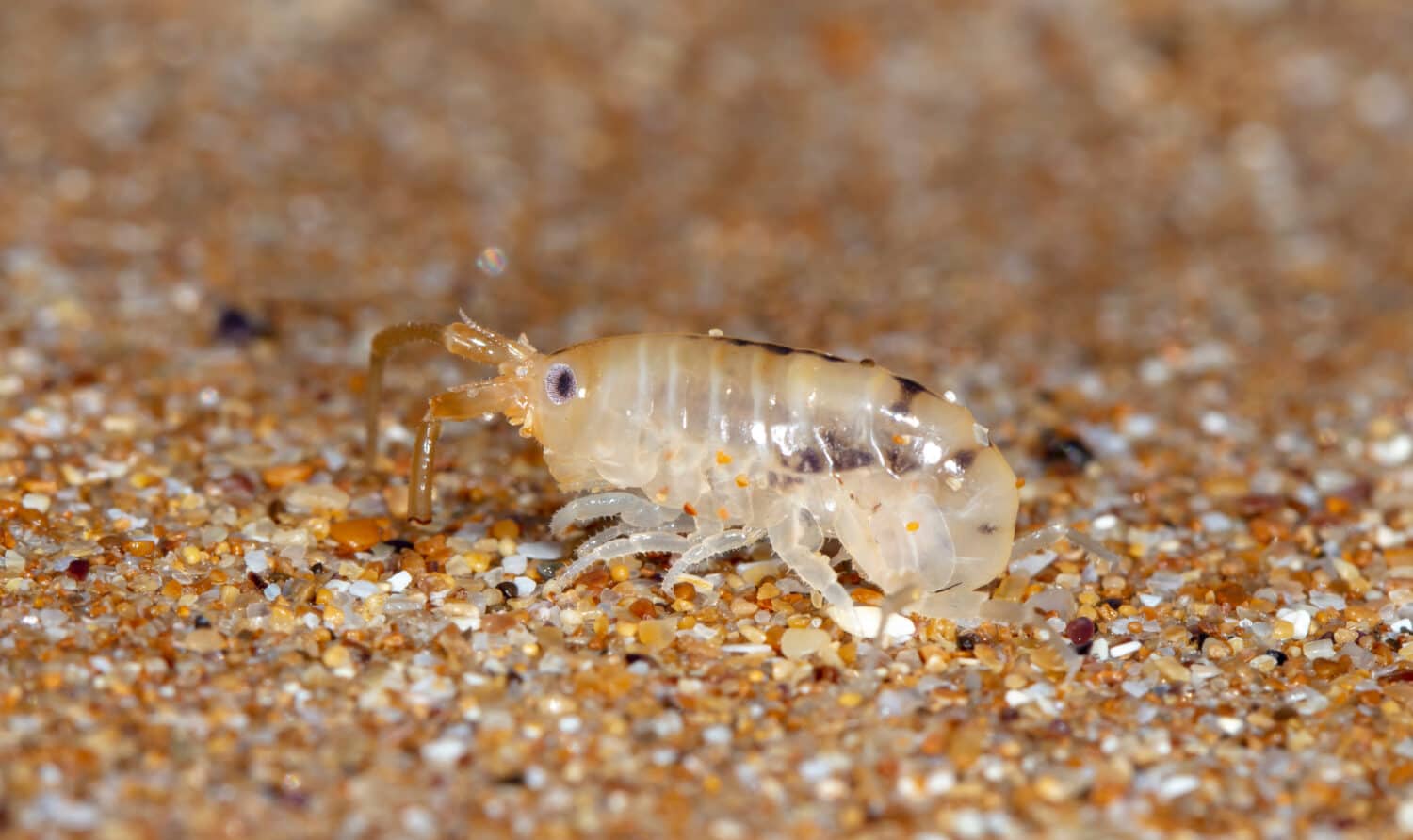
Sand fleas emerge at night to eat decaying organic matter.
©ch123/Shutterstock.com
Do They Bite?
Sand fleas on North American coastlines and inland coastal marshes don’t tend to bite, but the tropical chigoe sand flea does.
The chigoe sand flea feeds on mammals, biting and penetrating the skin to suck blood. Females may hold on, burrowing under the skin to lay eggs. An embedded chigoe is very painful and causes difficulty walking. After four to six weeks, the chigoes fall out, leaving open wounds and painful inflammation.
Symptoms of chigoe sand flea bites include:
- Inflamed wounds
- Trouble walking
- Peeling skin
- Nail loss
- Thick or hardened skin
- Thick or hardened nails
It’s more pronounced in underdeveloped rural locations in people who go barefoot around farms, dirt floors, and beaches. Most bites and infections occur from August to September. If you’re traveling to tropical areas, wear shoes to protect your feet.
Common sand fleas found on North American beaches might bite if they get trapped against your skin, but bites are rarely noticeable and tend to clear up after a few days.
On the rare occasion you do receive a sand flea bite, it’s mostly likely to occur on the feet, ankles, and lower legs because sand fleas can only jump eight to ten inches. Sand flea bites look like regular flea bites, with red bumps in small two-to-three-bite clusters.
Standard North American sand fleas do not burrow into skin, and chigoes are extremely rare. The World Health Organization says tungiasis occurs in resource-poor populations of the Caribbean, South American, and sub-Saharan African tropics.
Treating Sand Flea Bites
A small, itchy bite received at the beach is most likely from a midge or sand fly. Treat it with over-the-counter antiseptic cream or aloe vera to reduce itchiness. If it doesn’t clear up in a few days, seek medical advice.

Most beach bites come from midges or sand flies like these above.
©Iurii Stepanov/Shutterstock.com
Sand Flea Life Cycle
Female sand fleas brood their young in a pouch attached to their underbellies. From here, eggs mature over one to three weeks and hatch out as juveniles that look just like the adult form, only smaller and often translucent.
Common sand fleas can live up to 21 months but generally live for a year. A male sand flea fights other males for the right to mate with females in a colony beneath the sandy shoreline, but this shifting environment can change from day to day. A male may discover his harem vanished after the tide retreats.
What Do Sand Fleas Eat?
Sand fleas primarily eat organic debris, including plant or animal matter, or detritus in decaying seaweed. Human junk food is a target, too, left over sandwiches entangled in seaweed look like fair game if seabirds don’t snatch it first.
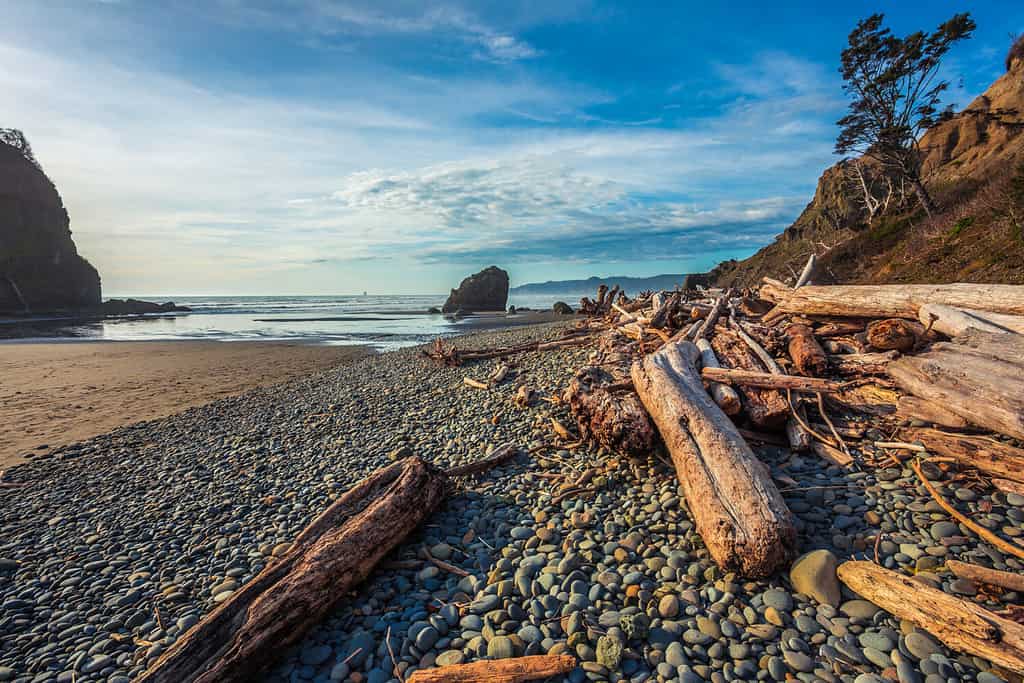
Sand fleas live just above the high tide line, in damp burrows, or beneath seaweed and beach detritus.
©Beach Creatives/Shutterstock.com
Sand Flea Predators
Intertidal foraging shorebirds feast on sand fleas such as sandpipers and avocets. Sand fleas are an important food source for fish and crabs who also swallow up any sand fleas they come across. In some countries such as Indonesia, people eat large sand fleas, frying them up with spices!
What Do Sand Fleas Look Like? How to Identify One
So, what do sand fleas look like? Let’s recap.
Common sand fleas, also called sand or beach hoppers, are pretty small, and most of the time, we see them jumping. It’s easiest to identify a sand flea from its eight-inch jump. Move a rock or seaweed on the tide line, and whatever pings out is most likely a sand flea.
If your eyesight is good, or you manage to get a photo to enlarge, you’ll see sand fleas have gray, brown, tan, or green bodies depending on the sand’s color, two reddish antennae, and five sets of legs. Their bodies curl down at the back like a roly-poly, and minuscule black eyes sit atop their heads.
The photo featured at the top of this post is © Bandersnatch/Shutterstock.com
Thank you for reading! Have some feedback for us? Contact the AZ Animals editorial team.







